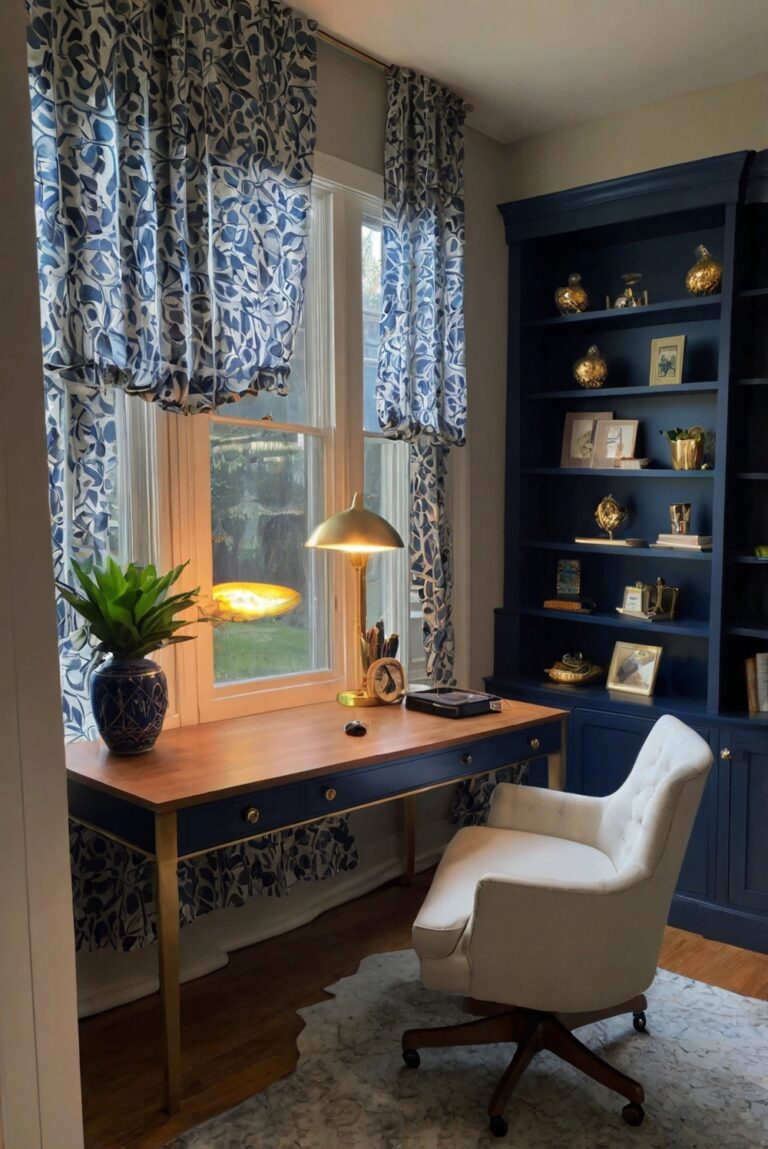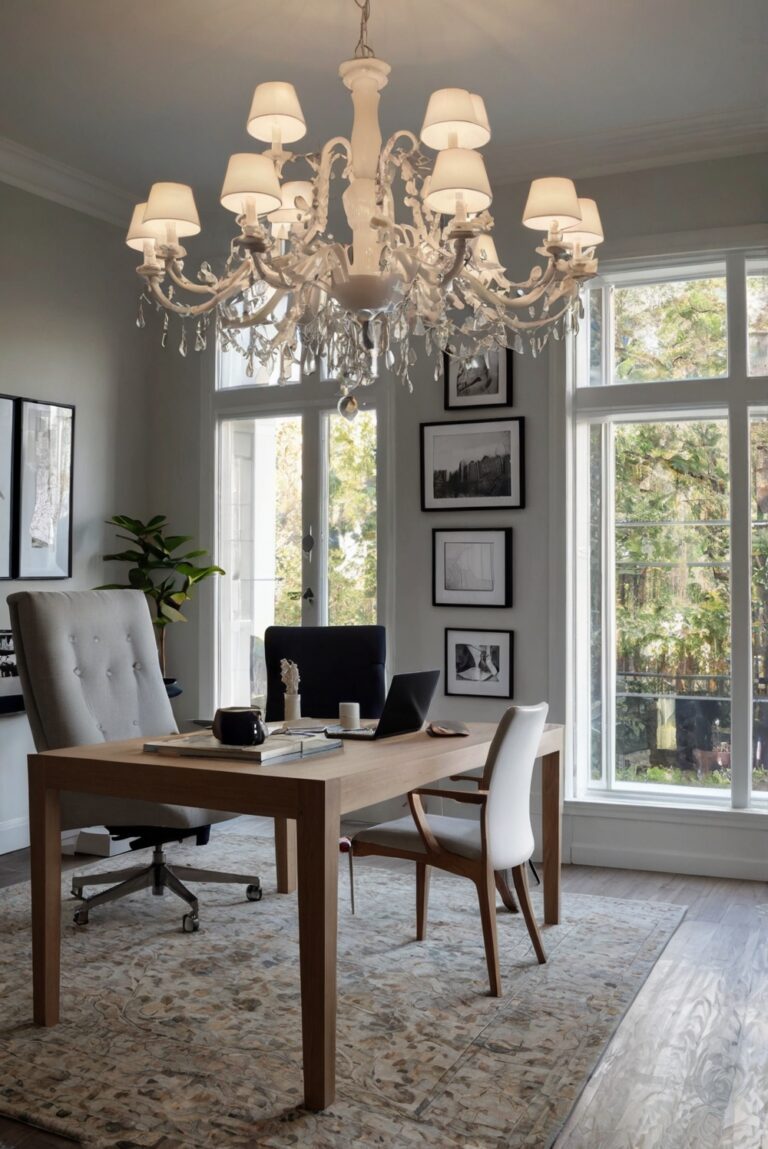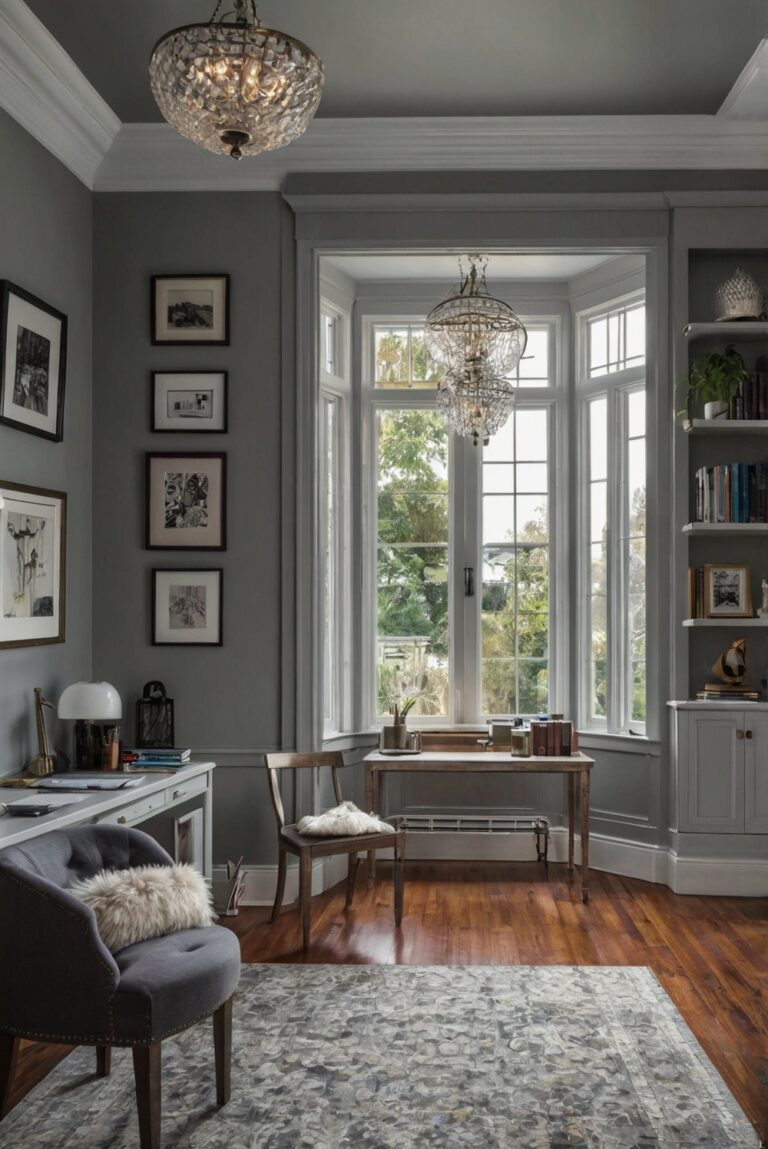
Discover the advantages of incorporating smart lighting systems in your home office. Enhance productivity, comfort, and efficiency with this essential interior design element.
Benefits of smart lighting systems for home offices include increased productivity, energy efficiency, and convenience. Smart lights can be programmed to adjust according to the time of day, helping create a harmonious work environment. They also offer remote control access, allowing you to turn them on/off or adjust brightness levels from anywhere. Additionally, smart lighting systems can enhance the aesthetics of your home office with customizable color options and mood-setting capabilities. To ensure a well-designed space, consider consulting with an interior designer specializing in home office decor. Lastly, be mindful of color matching when painting your walls to complement your smart lighting scheme.
Enhanced Productivity:
Smart lighting systems offer the flexibility to adjust the brightness and color temperature of lights based on the time of day and task at hand. This can help create an optimal work environment that promotes focus and productivity. Research has shown that exposure to the right type of lighting can positively impact mood, energy levels, and cognitive performance, ultimately leading to higher productivity levels in home offices.
Energy Efficiency:
Smart lighting systems are equipped with sensors and timers that can automatically turn lights on or off based on occupancy or natural light levels. This helps reduce energy waste and lower electricity bills. Additionally, the ability to dim lights and adjust settings remotely through a smartphone app can further optimize energy usage in home offices.
Personalized Comfort:
With smart lighting systems, users have the ability to customize lighting preferences to suit their individual needs and preferences. Whether it’s adjusting the brightness for different tasks, setting up lighting schedules, or creating personalized lighting scenes, smart lighting can enhance comfort and create a more personalized workspace in home offices.
Health and Well-being:
Smart lighting systems can mimic natural daylight patterns, helping regulate the body’s circadian rhythm and improve overall well-being. Exposure to the right type of lighting can also help reduce eye strain and headaches, creating a healthier and more comfortable working environment in home offices.
Convenience and Control:
Smart lighting systems can be easily controlled through voice commands, smartphone apps, or smart home assistants. This level of convenience allows users to adjust lighting settings without having to get up from their desks, enhancing overall comfort and efficiency in home offices.
In conclusion, smart lighting systems offer a wide range of benefits for home offices, including enhanced productivity, energy efficiency, personalized comfort, improved health and well-being, as well as convenience and control. By incorporating smart lighting solutions into home office setups, individuals can create a more conducive and efficient workspace that promotes productivity and well-being.
1. How do smart lighting systems benefit home offices?
Smart lighting systems offer several benefits for home offices, including improved productivity, energy efficiency, and convenience. These systems allow users to adjust the brightness and color temperature of lights based on their preferences and tasks. Research has shown that proper lighting can enhance focus and reduce eye strain, leading to better work performance and overall well-being. Additionally, smart lighting systems are often integrated with smart home assistants like Alexa or Google Home, making it easy to control the lights with voice commands or through a smartphone app. This level of automation and customization can create a more comfortable and efficient workspace for home office users.
2. Can smart lighting systems save energy in home offices?
Yes, smart lighting systems can help save energy in home offices by optimizing light usage and reducing unnecessary energy consumption. These systems often include features such as motion sensors, timers, and dimming capabilities, which allow users to automatically adjust lighting levels based on occupancy and natural light conditions. By using energy-efficient LED bulbs and smart controls, homeowners can significantly reduce their electricity bills while maintaining a well-lit workspace. Studies have shown that smart lighting systems can lead to up to 40% energy savings compared to traditional lighting setups, making them a cost-effective and sustainable choice for home offices.
3. Are smart lighting systems easy to install and use in home offices?
Most smart lighting systems are designed to be easy to install and use in home offices, even for individuals with limited technical skills. Many manufacturers offer plug-and-play solutions that can be set up within minutes without the need for professional installation. Users can simply replace their existing light bulbs with smart LED bulbs or install smart light switches to upgrade their lighting system. Once installed, smart lighting systems can be controlled through a central hub, a smartphone app, or voice commands, providing users with a user-friendly interface to adjust settings and create personalized lighting schedules. Overall, smart lighting systems offer a convenient and straightforward way to enhance the lighting experience in home offices.
4. What are the cost implications of implementing smart lighting systems in home offices?
The cost of implementing smart lighting systems in home offices can vary depending on the type of system chosen and the size of the workspace. Generally, smart LED bulbs are more expensive upfront than traditional incandescent or fluorescent bulbs, but they offer long-term cost savings due to their energy efficiency and durability. Smart light switches and hubs may also incur additional costs, especially if users opt for advanced features like color-changing capabilities or integration with other smart home devices. However, the overall return on investment for smart lighting systems is often favorable, as the energy savings and improved productivity can outweigh the initial expenses in the long run. Homeowners should consider their budget and lighting needs when choosing a smart lighting system for their home office.
5. What are some tips for maximizing the benefits of smart lighting systems in home offices?
To maximize the benefits of smart lighting systems in home offices, users can follow several tips and best practices. First, it’s essential to plan the lighting layout strategically by considering the location of workstations, natural light sources, and task lighting requirements. Users can create lighting zones for different activities, such as reading, computer work, or video calls, to ensure optimal light levels for each task. Additionally, users should take advantage of smart lighting features like scheduling, dimming, and color temperature adjustments to create a comfortable and productive workspace. Regularly updating the lighting settings based on personal preferences and work routines can help users stay engaged and focused throughout the day. By implementing these tips, users can fully leverage the benefits of smart lighting systems in their home offices.






